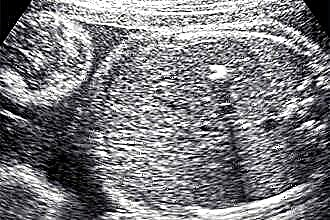The inner ear is the most sensitive and most complex part of the human hearing organ. It is she who allows us to recognize various sounds that are captured by the auricle, transmitted to the middle ear, where they are amplified, and then, in the form of weak electrical impulses, they reach the nerve endings, from where they enter the brain. The main functions of the inner ear are precisely the transformation and further transmission of sound.
The structure and function of the snail
 At first glance, the structure of the human inner ear does not seem too complicated. But upon closer examination, it turns out that this is a perfect system filled with a special liquid, each detail of which has a specific purpose. The inner ear is located deep in the temporal bone. It is invisible and inaccessible from the outside. On the one hand, this provides reliable protection for the inner ear from negative environmental influences. On the other hand, it greatly complicates the diagnosis of various ear diseases.
At first glance, the structure of the human inner ear does not seem too complicated. But upon closer examination, it turns out that this is a perfect system filled with a special liquid, each detail of which has a specific purpose. The inner ear is located deep in the temporal bone. It is invisible and inaccessible from the outside. On the one hand, this provides reliable protection for the inner ear from negative environmental influences. On the other hand, it greatly complicates the diagnosis of various ear diseases.
The structure of the inner ear is a winding bony labyrinth, inside which the rest of its elements are located:
- snail;
- vestibule;
- semicircular canals.
The cochlea in the ear is responsible for transmitting nerve impulses from the middle ear to the brain. In shape, it is very reminiscent of a mollusk and for this similarity it got its name.
Its inner part is divided by thin partitions and filled with a perilithm. On the lower wall of the cochlea is the organ of Corti - a kind of clot of sensory cells, very reminiscent of the finest hairs. These cells perceive fluid vibrations and convert them into nerve impulses that enter the vestibular cochlear nerve, and from there into a special part of the brain responsible for recognizing sounds.
Vestibular apparatus
The other two organs that make up the inner ear are simpler in structure. The vestibule is the heart of the ear labyrinth. This is a cavity in which special semicircular canals filled with fluid are located. There are three of them in the right and left ear and they are located in different planes at right angles to each other.
When the head is tilted, fluid overflows inside the semicircular canals and irritates certain nerve endings. A special analyzer uses them to calculate the position of the body in space. With inflammatory processes in the inner ear, patients often partially lose their orientation, dizziness and other unpleasant sensations occur.

In many people, the vestibular apparatus is hypersensitive from birth. They are seasick in transport, they cannot ride on merry-go-rounds, make sea trips. It is believed that the vestibular apparatus can be trained. But this has not been scientifically proven. All that can be really done is by an effort of will to suppress unpleasant sensations, trying not to pay attention to them.
Inner ear disorders
 Diseases of the inner ear lead to impaired sound perception and loss of balance. If the cochlea is injured, the patient hears the sound, but has difficulty identifying it. So he may not distinguish human speech or perceive sounds on the street as continuous unintelligible noise. This is a very dangerous situation, because it not only makes orientation difficult, but can also lead to injury. For example, if a person does not hear the sound of an approaching car.
Diseases of the inner ear lead to impaired sound perception and loss of balance. If the cochlea is injured, the patient hears the sound, but has difficulty identifying it. So he may not distinguish human speech or perceive sounds on the street as continuous unintelligible noise. This is a very dangerous situation, because it not only makes orientation difficult, but can also lead to injury. For example, if a person does not hear the sound of an approaching car.
The cochlea can also suffer from a sharp drop in pressure during takeoff, a quick dive, or if there is a strong explosion nearby. In this case, fluid from the inner ear ruptures the eardrum and flows out through the ear canal. Needless to say, the consequences are extremely unpleasant - from temporary to complete hearing loss.
With congenital deformity or underdevelopment of the cochlea, the problem can be solved only with the help of hearing aids - a complex and expensive operation.
In addition to barotrauma, the inner ear can be susceptible to the following diseases:
- benign paroxysmal dizziness, which occurs when the head is turned and gradually disappears on its own;
 otosclerosis - in which, due to the growth of bone tissue, the sensitivity of the hearing aid decreases and there is a periodic, and then constant tinnitus;
otosclerosis - in which, due to the growth of bone tissue, the sensitivity of the hearing aid decreases and there is a periodic, and then constant tinnitus;- sensorineural hearing loss - the inability to clearly perceive sounds, accompanied by various noises in the ears (squeak, ringing, etc.) and frequent dizziness;
- labyrinthitis - an acute or chronic inflammatory process that affects the inner ear and disrupts its normal functioning;
- dizziness - can be both an independent disease associated with a disorder of the vestibular apparatus, and a symptom of a number of other serious diseases;
- Meniere's disease is a strange disease, the causes of which have not been fully clarified, but the symptoms are severe attacks of dizziness, during which hearing sharply deteriorates.
Only a specialist can accurately diagnose diseases of the inner ear. Therefore, patients often go to the doctor when the disease has already developed and there are several symptoms at once. Treating the inner ear is difficult, and lack of treatment can lead to serious complications.
So if you suddenly notice such unusual symptoms as noise or ringing in your ears, sudden sharp pain inside the ear, repeated dizziness, strange noises in the absence of a sound source - immediately go for a diagnosis. At an early stage, most diseases are completely curable.

 otosclerosis - in which, due to the growth of bone tissue, the sensitivity of the hearing aid decreases and there is a periodic, and then constant tinnitus;
otosclerosis - in which, due to the growth of bone tissue, the sensitivity of the hearing aid decreases and there is a periodic, and then constant tinnitus;

